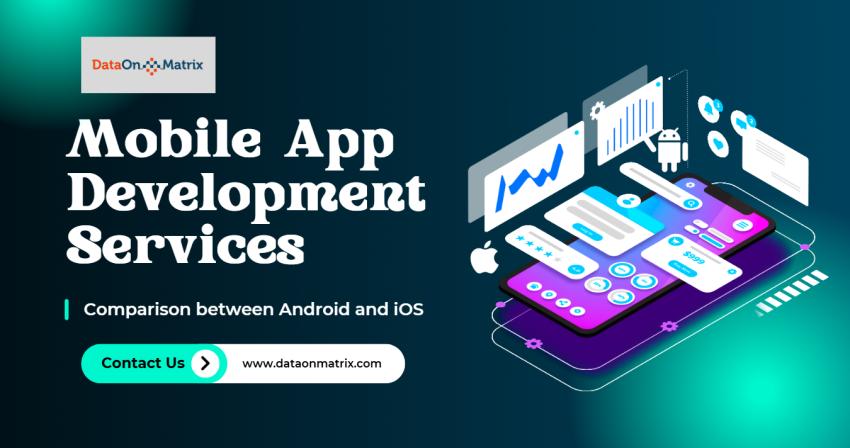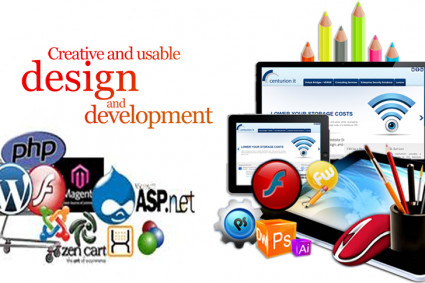
Most businesses reach customers through mobile applications. This has become one of the best ways to stay close to their customers. Many organizations turn to expert mobile app development services to get the best possible results.
These services cover building, deploying, and maintaining apps for Android and iOS operating systems. A premium app can bring your brand or company into a user’s pocket. Through in-app advertising and app stores, the revenue of mobile apps is expected to reach around $613 billion. It demonstrates how essential mobile apps have become for business success. It also explains why companies invest in professional mobile application development to build user-friendly and long-lasting solutions.
This article explains what Android and iOS app development means and their pros & cons. It also demonstrates how businesses use them and why an app maintenance service is essential.
In this article, we will explain:
What are Android and iOS mobile app development
The pros and cons of each platform
Use cases (when to pick which)
How app maintenance plays a crucial role
Understanding Mobile Apps for Android and iOS
“Mobile App Development Services” is a broad term. It usually includes:
Android mobile application development
iOS app development
Design of user experience (UI/UX)
Backend services (APIs, servers, data)
Testing (quality assurance)
Deployment (publishing to Google Play, Apple App Store)
App maintenance service (updates, bug fixes, support)
A mobile app development company is an organization that offers those services. Businesses hire them to turn their ideas into a working app. When done well, mobile app development brings an idea into the hands of users on their phones. But every approach has tradeoffs.
Creating an app is similar to opening a digital door for online users. App designers shape the look, and developers write the code. Testers make sure everything works well. Project managers guide teams to build the final app that fits the client’s needs. App maintenance keeps it running safely once it’s live on the App Store or Google Play.
iOS (Apple) — Pros and Cons
Pros:
Strong monetization potential
Most iOS users like to pay for apps. They use premium features or in-app purchases to get the maximum benefits.Fewer device variations
Apple controls both hardware and software more intelligently. There are fewer screen sizes, OS versions, and hardware differences.Consistent performance
iOS devices are capable of delivering consistent performance and integration with hardware. These capabilities help the app run smoothly.App Store policies and quality
Apple has strict guidelines for users on its App Store. This can bring better quality and security to establish user trust.Strong developer ecosystem and tools
iOS application development involves frameworks like SwiftUI & UIKit and tools such as Xcode and the Swift language, which offer mature and robust support.Security and privacy reputation
iOS apps are safer as Apple spotlights user privacy, including permissions and App Store review.
Cons:
Harder approval and review
Your app should follow Apple’s strict guidelines. It will reject your app if it doesn’t meet specific requirements. It would add a delay in releasing the app.Higher development cost sometimes
Because of high expectations and stricter design standards, polishing an iOS app can be costlier.Restricted to the Apple ecosystem
You will need an Android version if your audience is broad. Keep in mind that iOS apps don’t run on Android without a peer.Revenue sharing
Under specific thresholds, Apple takes a cut of 30% or 15% of in-app sales. This will directly affect your business model.
Android — Pros and Cons
Pros:
Large global reach
Android holds the largest market share of smartphones worldwide, especially in most non-Western markets. So, Android apps can reach more users.Flexibility in app distribution
You can publish apps via Google Play, but also via other app stores (Amazon, third-party) or direct APK installation.More hardware variety and innovation
Android application services offer novel features to enjoy, such as foldable displays and custom sensors.Open environment
Android is more liberal in terms of customization and background processes compared to iOS in many respects.Fewer barriers to entry
The requirements for publishing and review are generally less strict, so you can iterate faster.
Cons:
Device fragmentation
There are many brands, screen sizes, OS versions, and device capabilities. Testing becomes complex and expensive.Variable performance & hardware quality
Most lower-end devices struggle with heavy apps. This often causes crashes or slowdowns in performance.Major security concerns
The permissiveness of the Android ecosystem and the availability of external app stores. Android app programming needs extra care as Android apps are more common targets for malware.Monetization challenges
Most Android users choose free apps instead of paid apps. So, you will find low revenue per user in some markets worldwide.
App Maintenance Services — Why They Matter
The work isn’t done after launching an app. Your app will need app maintenance services for many reasons:
Operating systems (iOS, Android) update often, and your app must remain compatible.
Security patches may be needed to close vulnerabilities.
Bugs or crashes among users must be addressed.
New features or improvements (UI, performance) may be requested.
Analytics and monitoring help you refine your app over time.
A mobile app without maintenance becomes stale, insecure, or broken. That’s why a client often looks for a development company that provides not just an initial build, but maintenance too.
Real-Life Example
Let’s look at a real case where a client got native apps built for both Android and iOS. DataOnMatrix offers a client management (SaaS) platform. The mobile app development company asked a development team to build native mobile clients for iOS and Android. The team developed an app to facilitate its users to manage their routine work.
In that project, the development team:
Migrated existing app modules to Swift (for iOS) and Kotlin (for Android)
Ensured parity of functionality (prospecting, payments, and client work) across both platforms
Handled technical challenges (code quality, legacy modules, and staffing)
Kept communication consistent with daily scrums and overlap of working hours
The apps could fully exploit platform capabilities as they used native development. They delivered performance and a smooth user experience.
FAQs:
What are the key differences between iOS and Android applications?
The iOS app is dedicated to iPhone, iPad, and other Apple devices. Android apps are designed for Google’s operating systems. iOS apps offer strong security, while Android offers more reach.
How long does a mobile app take to build?
The app-building time depends on the size and features. A smaller app takes a couple of weeks, while a larger app often takes several months. A reliable development firm helps plan and complete the app development project faster.
Why does an app need maintenance after launch?
Apps need frequent updates to stay safe and reliable. App maintenance service helps enhance performance and fix bugs. This will ensure the app works with iOS and Android versions.




